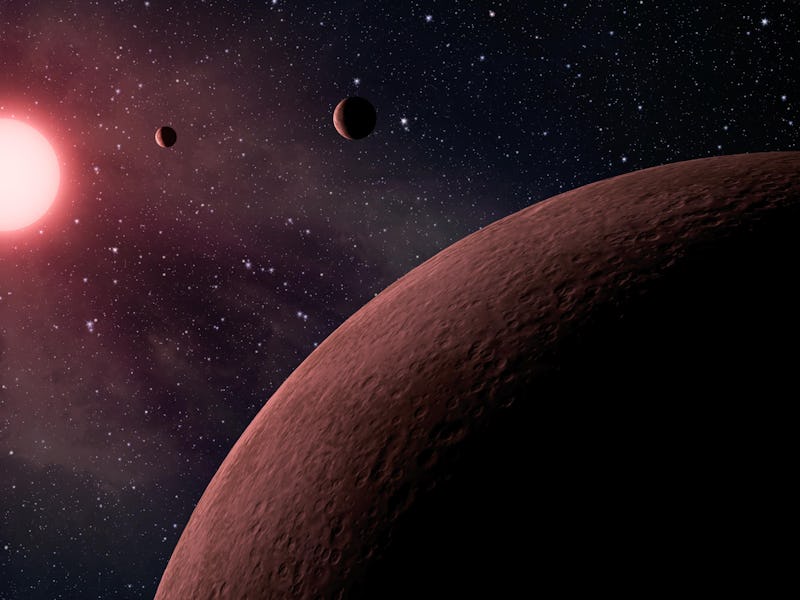The Kepler Space Telescope Just Discovered More Than 200 New Planets
The galaxy is rich in Earth-like planets.

Humanity’s premier planet sleuth, the Kepler Space Telescope, has spotted more than 200 more planetary candidates, bringing the list to over 4,034 suspected exoplanets.
NASA announced the new interstellar additions at a Monday news conference at NASA’s Ames Research Center, completing the world’s most comprehensive catalog of exoplanets. For the first four years of Kepler’s mission, the space telescope trained its telescopic eye on a small region in space, specifically in the Cygnus constellation, and of the suspected exoplanets, 2,335 have been verified as actually being planets.
Perhaps most intriguing, however, is the number of habitable Earth-sized planets that occupy just a small swath of space. Kepler identified 10 more of these planets, bring the total to some 50 of these Earth-like rocks, 30 of which have been double-checked and verified.
“This carefully-measured catalog is the foundation for directly answering one of astronomy’s most compelling questions — how many planets like our Earth are in the galaxy?” said Susan Thompson, a Kepler research scientist for the SETI Institute and lead author of the catalog, at the announcement.
Kepler-186f, a potentially habitable, Earth-like exoplanet.
With a wealth of planets to study, scientists found that small planets come in two distinct groups. There are rocky, Earth-sized planets and gas-rich planets that are larger than Earth but smaller than Neptune. (Neptune is about four times the size of Earth.) Scientists used a powerful land-based telescope, the W. M. Keck Observatory atop Mauna Kea in Hawaii, to accurately measure the width of 2,000 of Kepler’s planets.
This sketch illustrates a family tree of exoplanets.
“We like to think of this study as classifying planets in the same way that biologists identify new species of animals,” said Benjamin Fulton, one of the catalog’s scientists, at the announcement. “Finding two distinct groups of exoplanets is like discovering mammals and lizards make up distinct branches of a family tree.”
The Kepler catalog reveals that the rocky planets are often about 75 percent larger than Earth, and about half of these planets end up accumulating the common gases helium and hydrogen, which “swells” their size, transforming them into Neptune-like planets.
Researchers using data from the W. M. Keck Observatory and NASA's Kepler mission have discovered a gap in the distribution of planet sizes.
For now, the eight-year-old Kepler Space Telescope will stare at other patches of the sky in our galaxy, where some wild planetary families have been found — not least the Trappists — a cluster of seven rocky, earth-sized planets that live so close to one another, there’s good potential that primitive life on one planet could migrate to others.